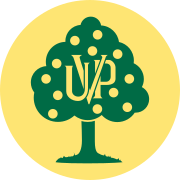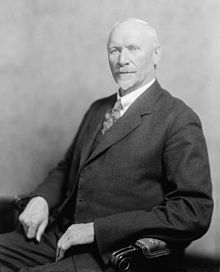
Field Marshal Jan Christian Smuts, was a South African statesman, military leader and philosopher. In addition to holding various military and cabinet posts, he served as prime minister of the Union of South Africa from 1919 to 1924 and 1939 to 1948.
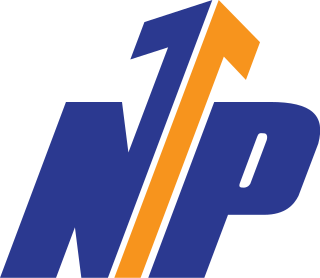
The National Party, also known as the Nationalist Party, was a political party in South Africa from 1914 to 1997, which was responsible for the implementation of apartheid rule. The party was an Afrikaner ethnic nationalist party, which initially promoted the interests of Afrikaners but later became a stalwart promoter and enactor of white supremacy, for which it is best known. It first became the governing party of the country in 1924. It merged with its rival, the SAP, during the Great Depression, and a splinter faction became the official opposition during World War II and returned to power. With the National Party governing South Africa from 4 June 1948 until 9 May 1994, the country for the bulk of this time was only a de jure or partial democracy, as from 1958 onwards non-white people were barred from voting. In 1990, it began to style itself as simply a South African civic nationalist party, and after the fall of apartheid in 1994, attempted to become a moderate conservative one. The party's reputation was damaged irreparably by perpetrating apartheid, and it rebranded itself as the New National Party in 1997 before eventually dissolving in 2005.

Daniël François Malan was a South African politician who served as the fourth prime minister of South Africa from 1948 to 1954. The National Party implemented the system of apartheid, which enforced racial segregation laws, during his tenure as Prime Minister.

Johannes Gerhardus Strijdom, also known as Hans Strijdom and nicknamed the Lion of the North or the Lion of Waterberg, was the fifth prime minister of South Africa from 30 November 1954 to his death on 24 August 1958. He was an uncompromising Afrikaner nationalist and a member of the largest, baasskap faction of the National Party (NP), who further accentuated the NP's apartheid policies and break with the Union of South Africa in favour of a republic during his rule.
The Progressive Party was a liberal party in South Africa which, during the era of apartheid, was considered the left wing of the all-white parliament. The party represented the legal opposition to apartheid within South Africa's white minority. It opposed the ruling National Party's racial policies, and championed the rule of law. For 13 years, its only member of parliament was Helen Suzman. It was later renamed the Progressive Reform Party in 1975, and then Progressive Federal Party in 1977. The modern Democratic Alliance considers the party to be its earliest predecessor.
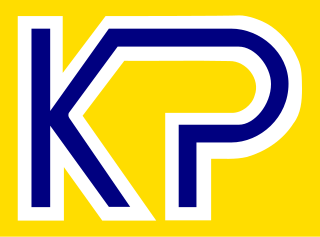
The Conservative Party of South Africa was a far-right South African political party that sought to preserve many aspects of apartheid in the system's final decade, and formed the official opposition in the white-only House of Assembly in the last seven years of minority rule. It declined quickly after apartheid ended, before being merged with the Freedom Front in 2004.

The Progressive Federal Party (PFP) was a South African political party formed in 1977 through merger of the Progressive and Reform parties, eventually changing its name to the Progressive Federal Party. For its duration was the main parliamentary opposition to apartheid, instead advocating power-sharing in South Africa through a federal constitution. From the 1977 election until 1987 it was the official opposition of the country.
Liberalism in South Africa has encompassed various traditions and parties.
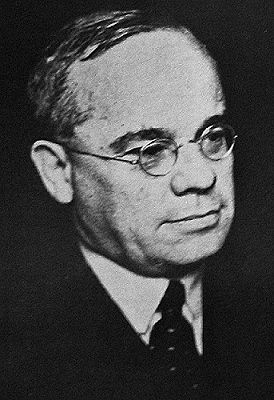
Jan Hendrik Hofmeyr was a South African politician and intellectual in the years preceding apartheid. In his lifetime he was regarded as one of the cleverest men in the country, and it was widely expected that he would eventually become Prime Minister of South Africa. He came from a well-known Afrikaner family; his uncle, also Jan Hendrik Hofmeyr but known affectionately as "Onze Jan" among fellow Afrikaners, was a famous figure in the Afrikaans language movement.
The South African Party was a political party that existed in the Union of South Africa from 1911 to 1934.
Jan Christiaan Smuts, OM was a prominent South African and Commonwealth statesman and military leader. He served as a Boer General duning the Boer War, a British General during the First World War and was appointed Field Marshal during the Second World War. In addition to various Cabinet appointments, he served as Prime Minister of the Union of South Africa from 1919 to 1924 and from 1939 to 1948. He played a leading part in the post war settlements at the end of both world wars, making significant contributions towards the creation of both the League of Nations and the United Nations.

General elections were held in South Africa on 26 May 1948. They represented a turning point in the country's history, as despite receiving just under half of the votes cast, the United Party and its leader, incumbent Prime Minister Jan Smuts, were ousted by the Herenigde Nasionale Party (HNP) led by D. F. Malan, a Dutch Reformed cleric.
The Herenigde Nasionale Party was a political party in South Africa during the 1940s. It was the product of the reunion of Daniel François Malan's Gesuiwerde Nasionale Party and J.B.M. Hertzog's breakaway Afrikaner nationalist faction of the United Party in 1940.

The New Republic Party (NRP) was a South African political party. It was formed as the successor to the disbanded United Party (UP) in 1977 and as a merger with the smaller Democratic Party. It drew its support mainly from the then Province of Natal, and tried to strike a moderate course between the apartheid policy of the ruling National Party (NP) and the liberal policies of the Progressive Federal Party (PFP).

Afrikaner nationalism is a nationalistic political ideology created by Afrikaners residing in Southern Africa during the Victorian era. The ideology was developed in response to the significant events in Afrikaner history such as the Great Trek, the First and Second Boer Wars and opposition to South Africa's entry into World War I.
The Reform Party was an anti-apartheid political party that existed for just five months in 1975 and is one of the predecessor parties to the Democratic Alliance. The Reform Party was created on 11 February by a group of four Members of Parliament (MPs) who left the United Party under the guidance of the leader of the United Party in the Transvaal, Harry Schwarz, who became the party's leader. Schwarz and others were staunchly opposed to apartheid and called for a much more rigorous opposition to the National Party. They said that they no longer felt the UP was "the vehicle in which we can travel the path of verligtheid". The party had four MPs, two senators, ten members of the Transvaal Provincial Council, 14 out of the 36 Johannesburg City Councillors and four Randburg City Councillors. This made it the official opposition in the Transvaal Provincial Council.

Nicolaas Christiaan Havenga was a South African politician who served as Finance Minister in the governments of J. B. M. Hertzog and Daniel François Malan.
Although the Democratic Alliance of South Africa in its present form is fairly new, its roots can be traced far back in South African political history, through a complex sequence of splits and mergers.
During the late 19th century and early 20th century, a number of South African and British political leaders advocated for a Greater South Africa. This irredentism can be regarded as an early form of Pan-Africanism, albeit strictly limited to White Africans of European ancestry.
Henry Allan Fagan, QC was the Chief Justice of South Africa from 1957 to 1959 and previously a Member of Parliament and the Minister of Native Affairs in J. B. M. Hertzog's government. Fagan had been an early supporter of the Afrikaans language movement and a noted Afrikaans playwright and novelist. Though he was a significant figure in the rise of Afrikaner nationalism and a long-term member of the Broederbond, he later became an important opponent of Hendrik Verwoerd's National Party and is best known for the report of the Fagan Commission, whose relatively liberal approach to racial integration amounted to the Smuts government's last, doomed stand against the policy of apartheid.
